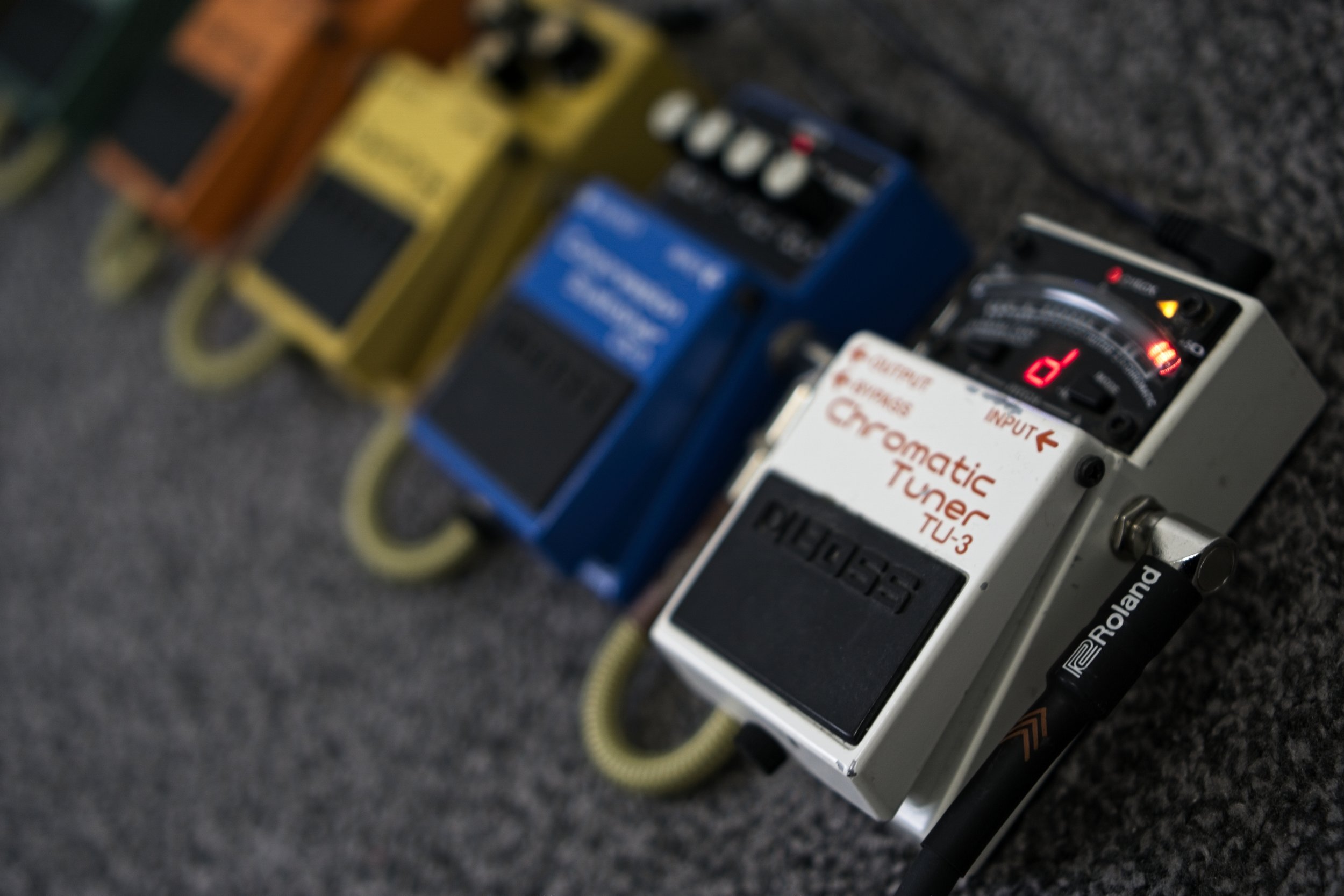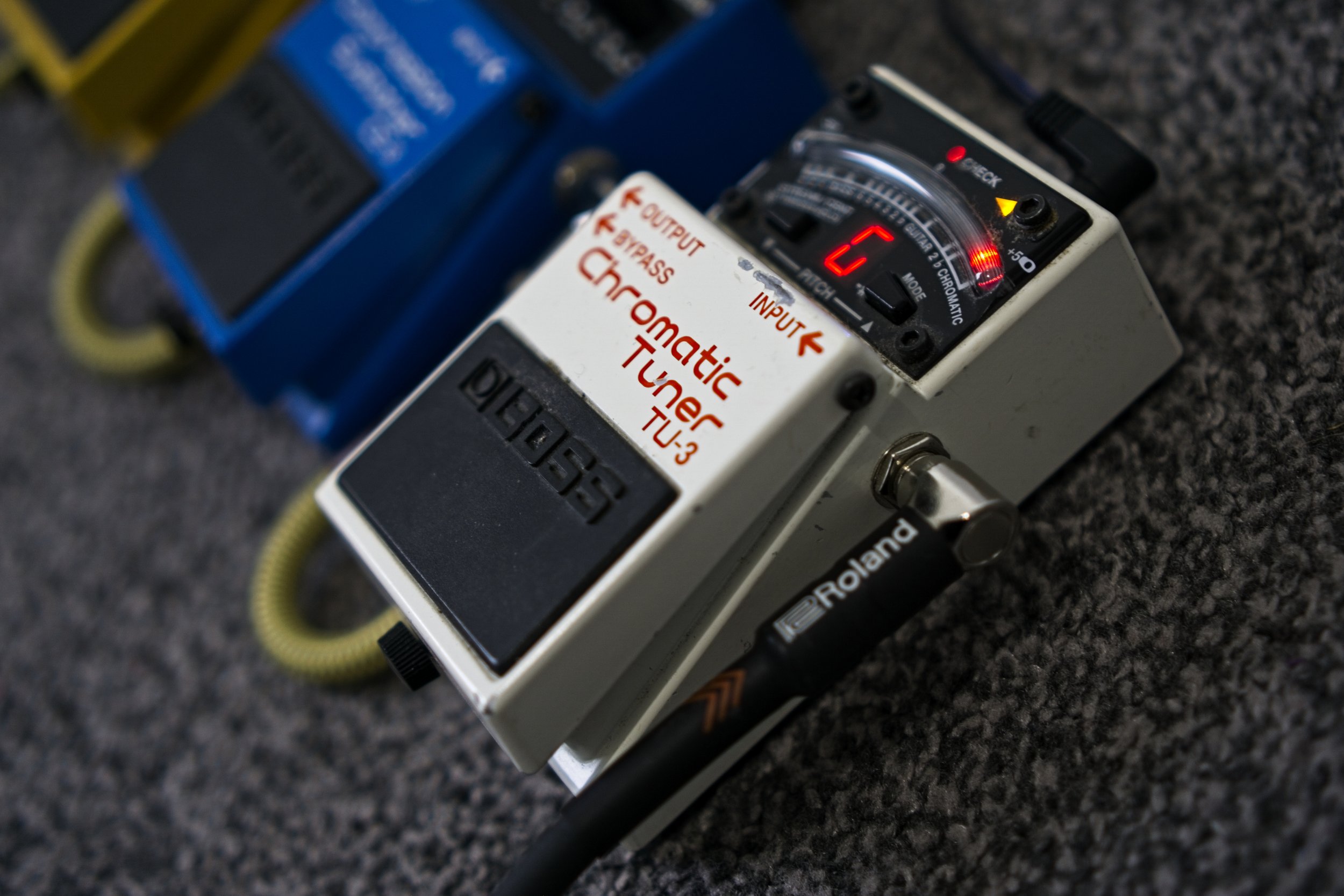Boss TU-3 Tuner
Does the job.
£84 at amazon.co.uk | £84 at thomann.com
When it comes to tuner pedals, Boss’s motto seems to be: “If it ain’t broke, reissue it in black and charge double”. That said, the TU-3 is a solid pedal tuner with a decent set of features that will last you a lifetime.
The display on the TU-3 does the job, but is not amazing. The note display is pretty small, compared to other options out there, but is still very legible. Its standard brightness level should be enough for most circumstances. If you are playing in a particularly bright environment (outdoors for example) or if the venue you are playing has a smoke machine, the TU-3 has a high-brightness mode too. Unfortunately, the brightness increase is rather minimal and you are still likely to have issues seeing the screen in a challenging environment.
The tuning accuracy of the TU-3 is ±1%. Anything past that is not necessary. It comes with the added benefit of being really fast to read the note – useful when you want to tune quickly between songs. On the other hand, there are more accurate tuners out there at this price point.
In typical Boss fashion, the TU-3 has a built-in buffer that remains switched on even if the pedal is off. This ensures your guitar tone doesn’t suffer any high-frequency loss. You will generally want your buffer at the start of your signal chain, which makes this an excellent feature in a tuner pedal. Unless you have a huge pedalboard or really long cables, the TU-3 will perform the same as the much more expensive Boss TU-3W. Even then, the differences will be minute if audible at all.
The build quality of the Boss TU-3 is excellent. I’ve had mine for over 10 years with no issues. The pedal offers various tuning modes, such as chromatic (shows current note), guitar and bass (shows closest string number). It even offers flat modes, if you need to tune slightly flat. The Boss TU-3 is a very high-quality tuner pedal, but it lacks many features compared to similarly priced tuners.
The Polytune by TC Electronic offers a brighter display and much greater tuning accuracy (±0.2%). It also lets you tune multiple strings at once in polyphonic mode. This is useful if you just need to check if any strings are out of tune quickly. Furthermore, the Polytune has a buffer output impedance of 100 Ohm, as opposed to 1 kOhm on the TU-3. Generally, a smaller output impedance will result in more of the higher frequencies being retained. The difference will generally be very small, but will get more pronounced if you have lots of pedals and cables in your signal chain.
The Korg Pitchblack X is another similarly priced tuner with better features than the TU-3. It has the biggest and brightest display of any tuner I have ever seen in addition to having a 100 Ohm output impedance. The Korg also has better tuning accuracy at ±0.5%. Both the Pitchblack and Polytune let you turn the buffer off, a feature reserved for the much more expensive Boss TU-3W.
Bottom Line
The Boss TU-3 is a reliable and well-built tuner pedal, but there are better value options available on the market. If you can find a TU-3 second-hand or with a good discount, you will not be disappointed. I have no plans to replace mine any time soon. At full price though, consider other options from Korg and TC Electronic.




